The Golden Pavilion, in Kyoto, reflected in the “mirror” pond.
W
asn’t Tokyo fulfilling? My time here did not highlight the nightlife and other amusements in the city, but it was enough for me. You see, I am a traveler on the way to enlightenment. That could include a club or two, but it was not an overwhelming desire for me. I have a few friends who can party for all of us and tell me about the things I missed. They love talking about their escapades and I get some vicarious enjoyment from it. Often, I get the feeling I haven’t missed much.
Back to Osaka
I boarded another Shinkansen and headed to Osaka city. It would be my base for a week before my flight out of Japan from Kansai airport or KIX.
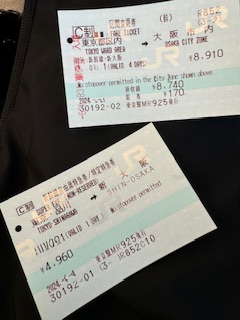
Shinkansen tickets out of Tokyo. More rain! Not one glimpse of Mt Fuji.
I cannot catch a break. One day!
One last time
In Osaka, I reserved a room at a nice private hotel to relax and recoup my energy. In a gesture of self-care for myself, I felt that I deserved this. No doubts. No guilt.
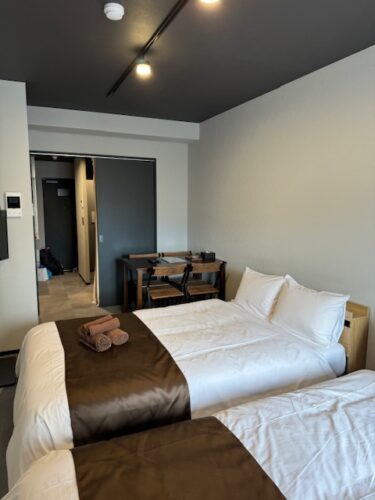
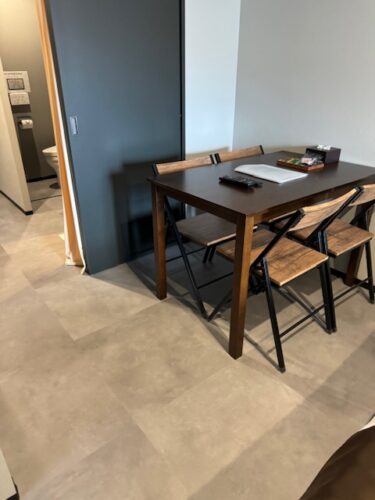
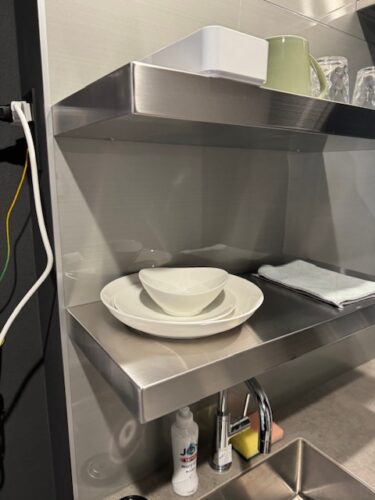
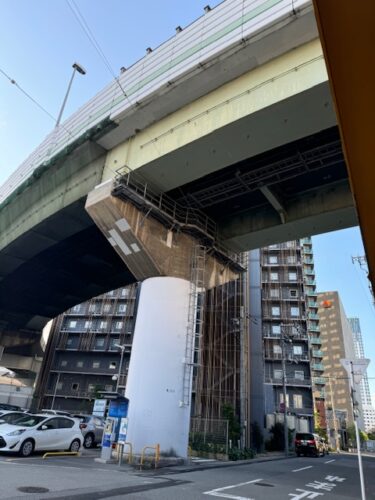
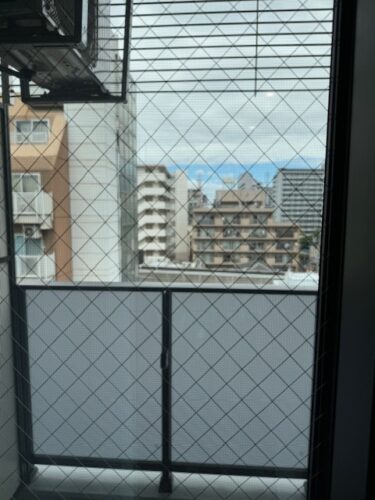
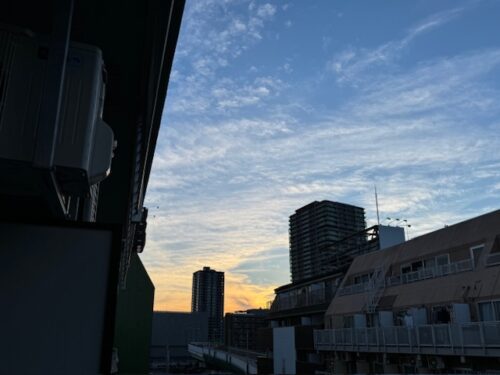
Osaka is a busy place that I grew quite familiar with during the time I stayed before going to Tokyo. My plan was to go out every day for one long, last time. Rain was in the forecast for the week, but it is still going to be hot. If the rain is very heavy, I might stay inside and watch the rain come down.
On one of the “good” weather days, I took a train to Kyoto for a visit to another temple.
First, I had to get there by train.
Kyoto Station
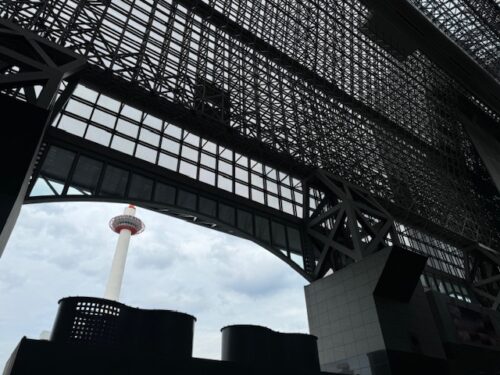
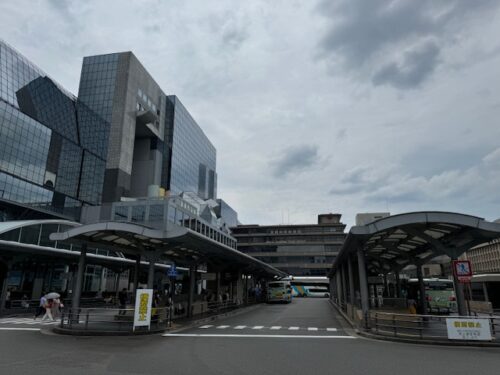
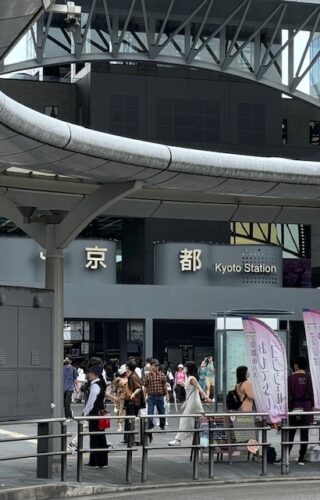
At Kyoto station, buses are lined up to take people to locations around the city.
There is an organized system of buses to take passengers to Zen Kinkaku-ji (the Golden Pavilion), Ginkaku-ji (the Silver Pavilion), Shokoku-ji and Jo-ji (five-storied pagoda) and many other temples and shrines around Kyoto. However, lines are long resulting in a long wait for a bus with open seats.
I am going for the Golden Pavilion.
Kinkaku-ji Temple
Temple of the Golden Pavilion
The structure is actually a pagoda made to house the sacred relics of the Buddha. There is a Shakyamuni triad installed on the first floor, a Kannon image on the second, and the sacred relics on the third.
It is actually called Rokuon-ji, a temple of the Rinzai-sect Zen temple. It was designated as a UNESCO World Heritage Site in 1994.
The entire complex is actually known as Kinkaku-ji.
During the Kamakura (shogunate) period (1185-1333), this land was the site of a villa of the aristocrat Saionji Kintsune, known as Kitayamadai. During the Muromachi period (1392-1573), however, it caught the attention of the third Ashikaga shogun Yoshimitsu (1358-1408), who took over the site from the Saionji family in order to build his own villa, which he called Kitayamadono.
The complex, whose gardens and architecture focused around a central Golden Pavilion, was said to evoke paradise on earth, a Pure Land.
After Yoshimitsu’s death, the villa was turned into a temple according to his will. The name Rokuon-ji was taken from the first two characters of Yoshimitsu’s posthumous name.
In the Meiji Period, Rokuon-ji, as a Buddhist temple, suffered persecution. With the help of the abbots and prominent patrons, it survived.
A 21-year-old monk burned Kinkaku-ji Temple down in 1950. The temple was rebuilt in 1955 and continues to function as a storehouse of sacred relics.
Entering the temple grounds
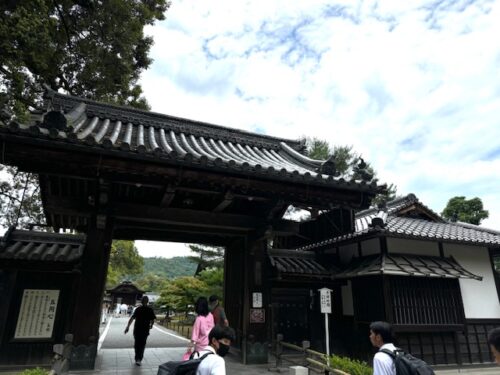
The path is crowded today with excited visitors taking photographs, which are permitted.
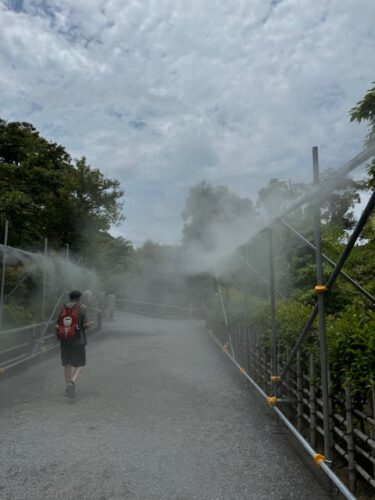
This spray of water helped to cool the crowd down.
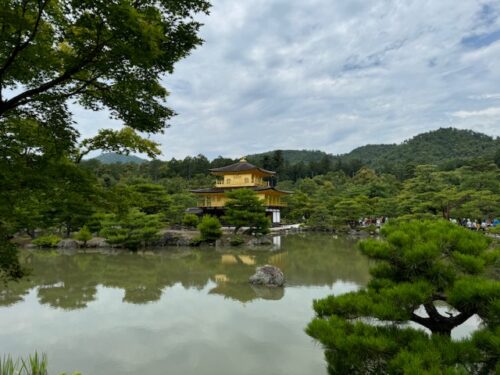
The strictly prescribed path through the sumon (gate) winds around the vast “mirror” pond giving the first sighting of the Golden pavilion.

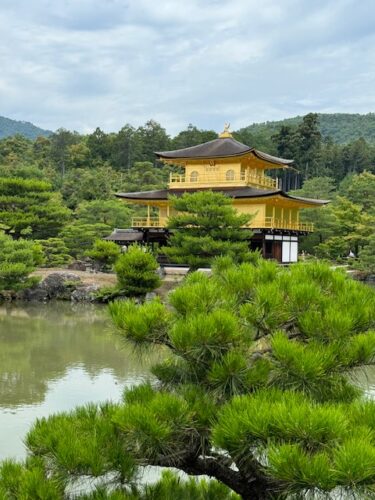
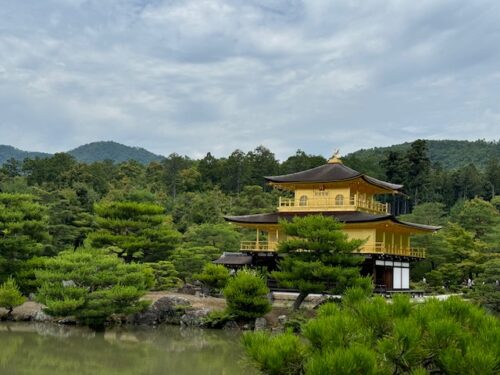
More views of the Golden Pavilion and mirror pond.
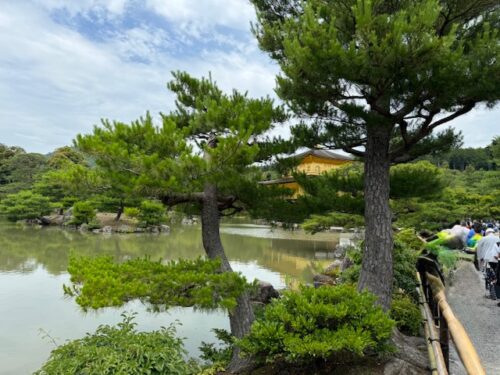
Golden Pavilion style details
The second and third outside stories are lacquered and adorned with pure gold leaf. The wood roof shingles are made from Sawara cypress. On top is a shining golden phoenix, an auspicious symbol in China.
The first story is known as Hossui-in, and is built in the Heian palatial style, shinden-zukuri. The second floor, Cho’on-do is in the buke-zukuri style that was common among samurai houses in the Kamakura period. The third floor, Kukkyo-cho, is in the style of Chinese Zen temples.
This harmonious blend of three styles is considered to be a masterful example of Muromachi period architecture.
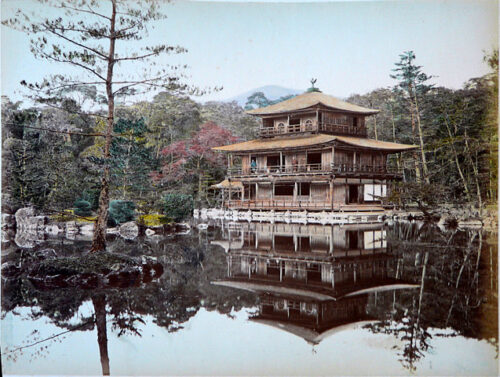
Painted photograph of the Golden Pavilion in 1885.
The gold leaf is peeling off due to deterioration over time.
Presumed author of the original photograph: Adolfo Farsari. (wikimedia: public domain)
In autumn 1987, the lacquer and (thicker) gold leaf were reapplied, and restorations were also done on the ceiling painting and the statue of Ashikaga Yoshimitsu.
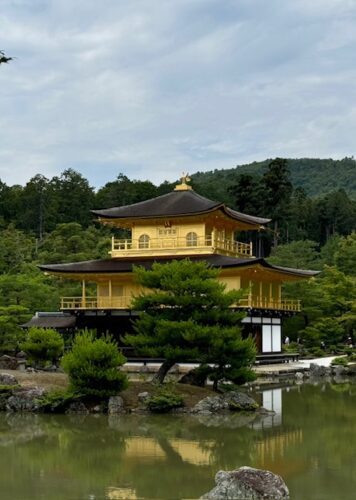
The temple’s image is reflected in the mirror pond. On a sunny day, the gold leaf on the structure gleams.
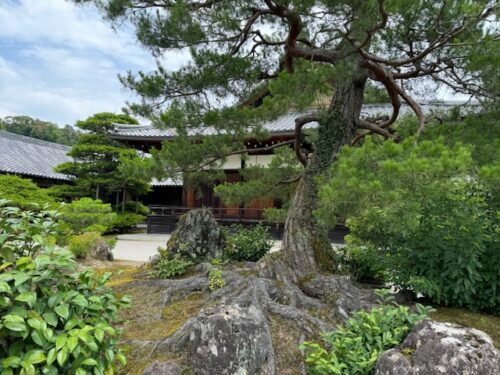
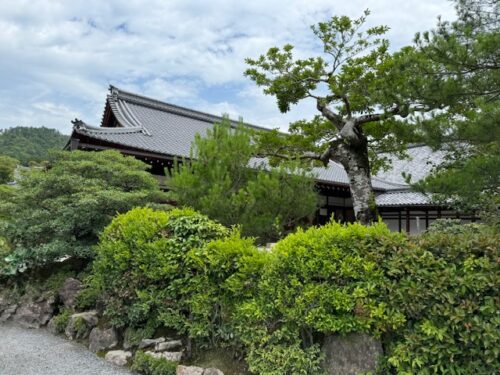
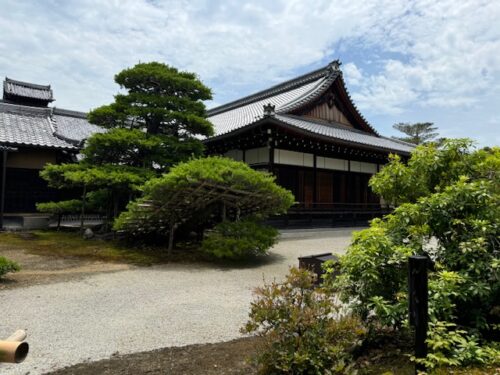
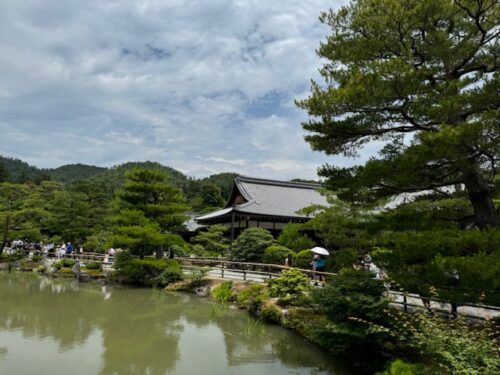
There are number of structures along the path which also have restricted access!
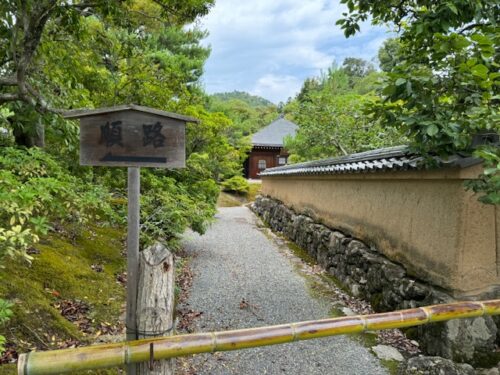
Views of the temple from the back.
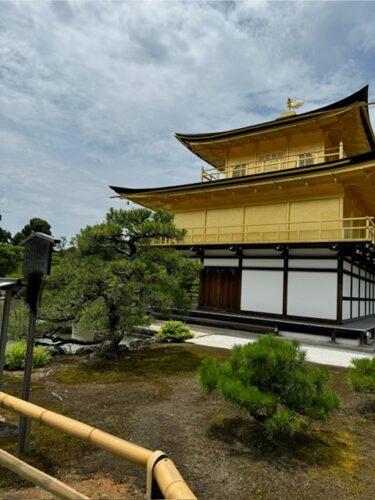
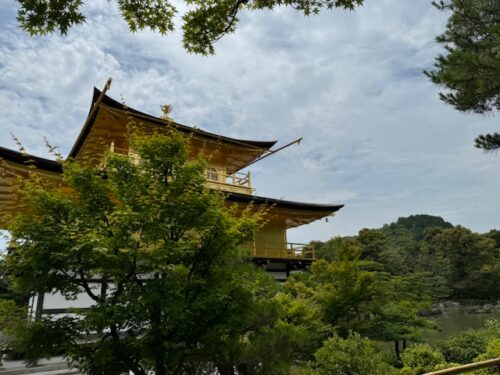
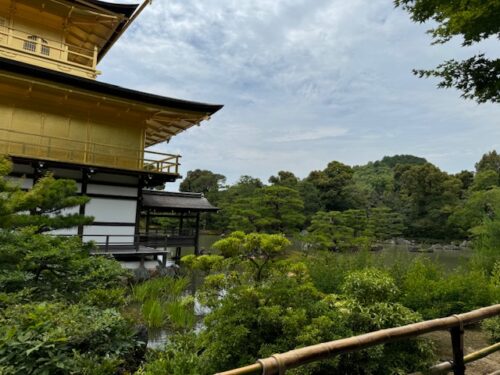
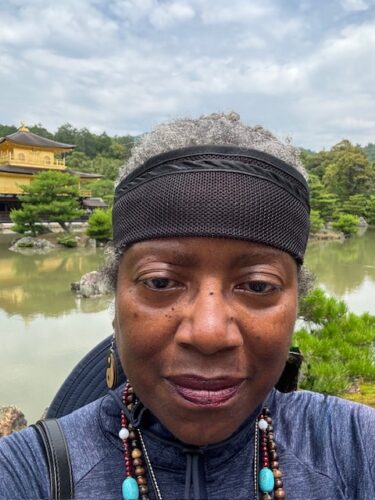
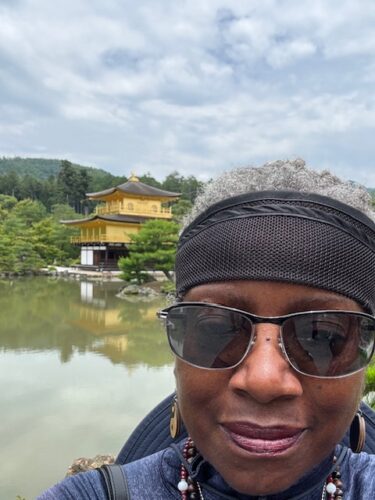
All of a sudden, I felt a wave of relief that my trip was almost over. I felt both sad and happy that I would not have to find a place to sleep another night during my wanderings. I felt light and I felt afraid of what was to come. But my pilgrimage walk gave me assurance that I can and will handle whatever comes my way. ☮️
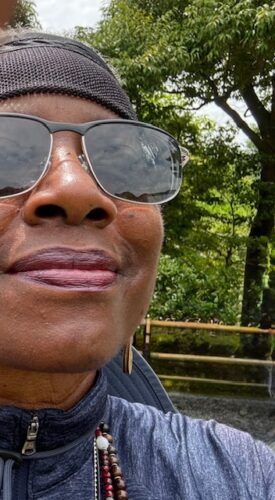
Around the Golden Pavilion
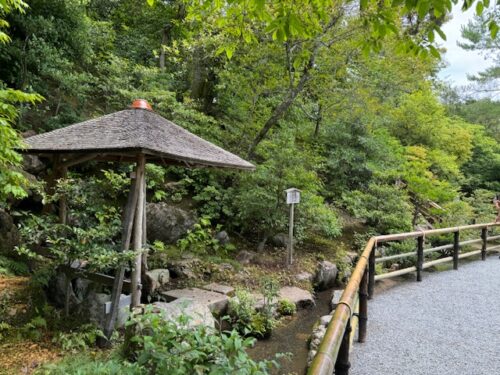
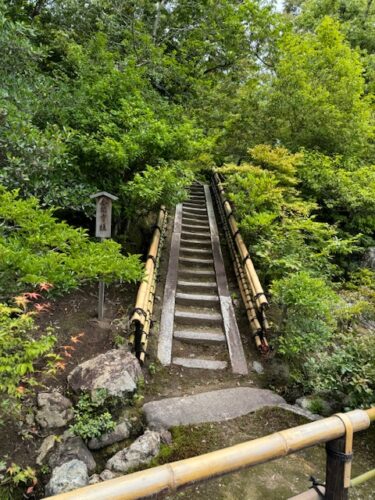
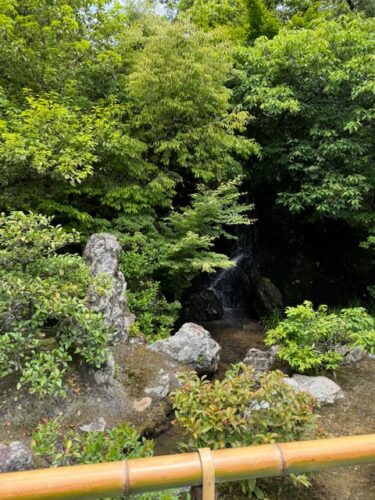
This small stone stairway is called Kokei-kyo, and on both sides are low bamboo fences, which are considered as the model for a style of bamboo fences called Kinkakuji-gaki.
The falls are 2.3 meters tall, and topping them off is a rigyoseki, or a carp stone, a reference to an ancient Chinese legend where a carp scaled the Ryumon Falls and transformed into a dragon.
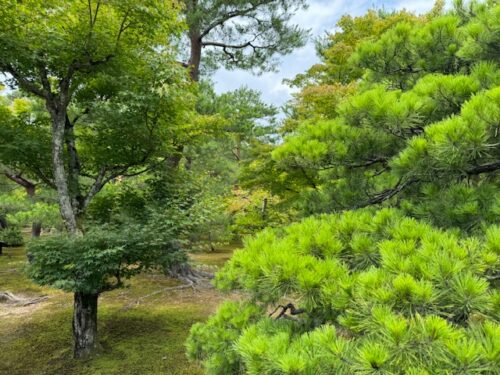
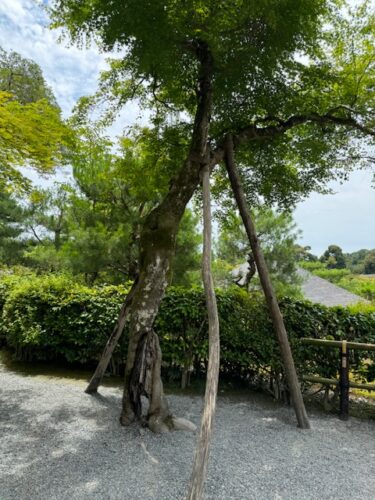
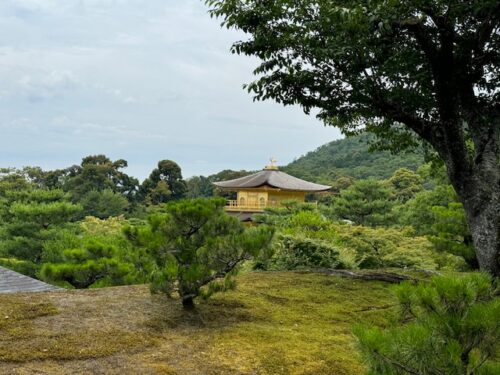
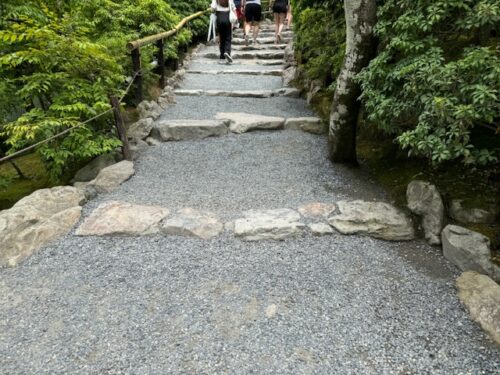
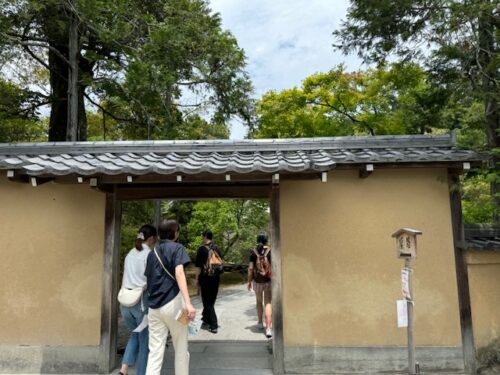
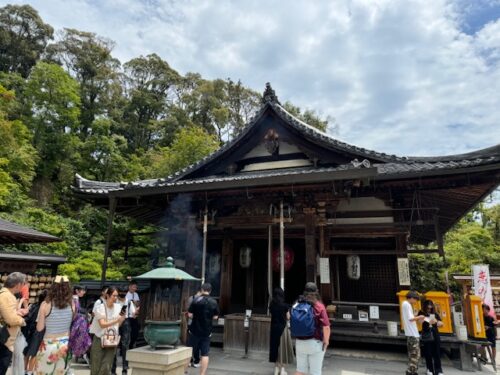
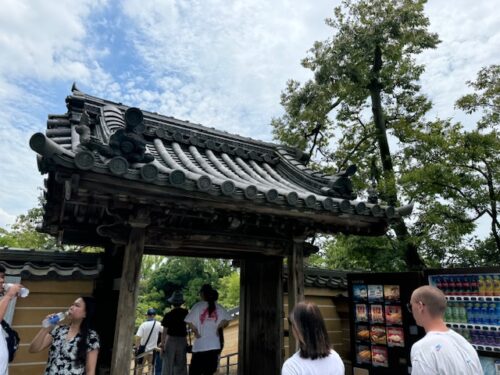
I got a goshuin for my stamp book here at the temple office before leaving!
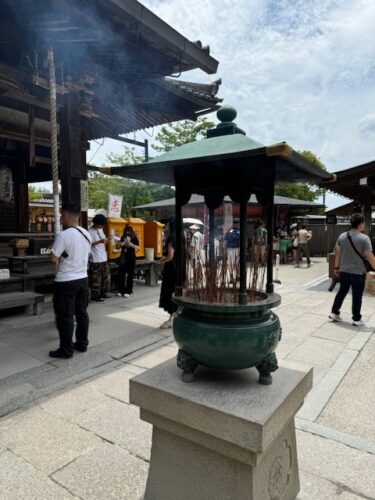
The incense urn.
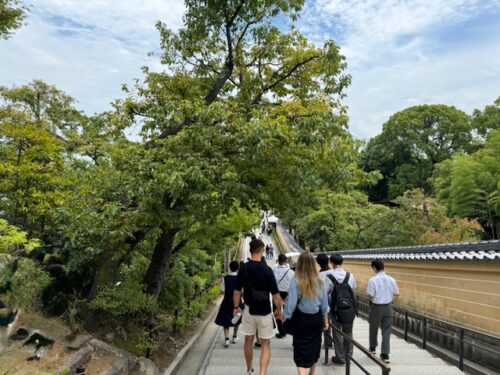
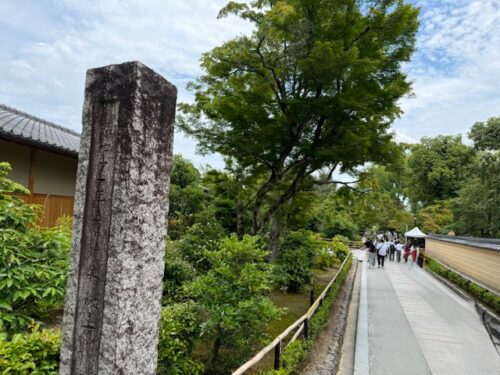
After this point you cannot go back!
I am putting this mildly when I say crowd control was quite meticulous from start to finish!
I take it as it comes. The point is to reinforce the belief that just the act of visiting a temple helps me come into contact with the teachings of Buddhism in the purest way. 🕉️
Kyoto train station
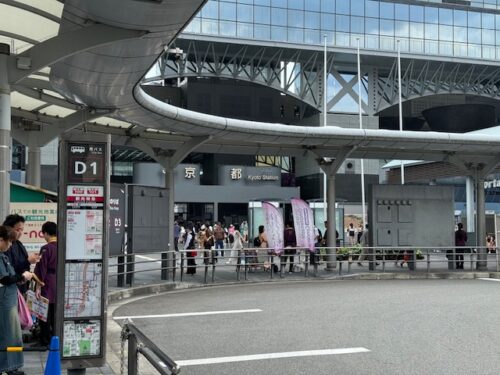
After the bus ride back to Kyoto station, I walked inside to purchase a ticket for my train ride back to Osaka.
Sunset in Osaka
Back to my peaceful room. Time for rest and reflection.

It is not the end just yet!
See you next time.
Baadaye and Mata Ne (またね)
Shirley J ♥️
This and several posts this summer chronicled my pilgrimage in Japan where I walked the 1200 kilometer-long Shikoku 88 temple pilgrimage and beyond. Read my announcement here.

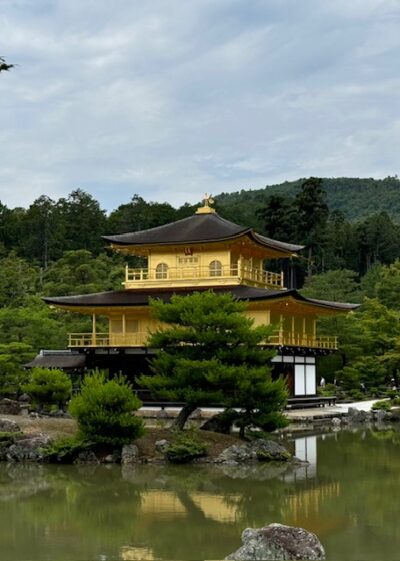
2 thoughts on “🌸 Noire Henro-san: Kyoto”
Getting closer. Thanks for another look at another different temple!
Thank you! 🕉️
Comments are closed.